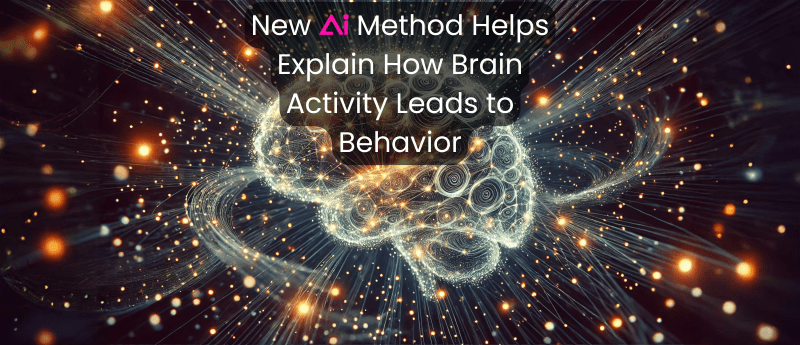New AI Method Helps Explain How Brain Activity Leads to Behavior

A new method called DPAD uses AI to better understand how brain activity relates to behavior by focusing on the most important brain signals and identifying where complex, nonlinear patterns appear.
One of the big challenges in neuroscience is figuring out how brain activity leads to behavior, as the brain’s signals are constantly changing and very complex. Traditional methods often struggle to capture the full picture, especially when it comes to non-linear aspects of brain activity or focusing on the signals most relevant to behavior.
DPAD, short for Dissociative Prioritized Analysis of Dynamics, offers a solution by using AI, particularly a type of model called recurrent neural networks (RNNs), to more accurately map how brain signals translate into behavior.
The Challenge of Modeling Brain Activity
Neural activity involves many neurons interacting over time, forming patterns that are key to behavior. Modeling this is difficult because brain data is not only high in volume but also changes over time. Traditional methods often use simplified approaches that miss key details, especially when it comes to separating the signals that really matter for understanding behavior from those that don’t.
Introducing DPAD
DPAD tackles these issues by using an advanced modeling approach that can separate and prioritize the brain activity most relevant to behavior. Its architecture is divided into two main parts:
- Behaviorally Relevant Section: This part focuses on brain activity directly related to behavior, ensuring that the model captures the most important information for predicting actions.
- Other Neural Dynamics Section: This part handles any other brain activity that isn’t directly linked to the behavior but still helps account for the full complexity of the neural data.
How DPAD’s AI Works
Recurrent neural networks (RNNs) are particularly good at working with time-based data, like brain signals, because they can remember and process information over time. DPAD’s design allows researchers to test where nonlinear patterns (complex relationships) are happening—from the initial brain activity to how these signals translate into behavior.
The training process is structured so that the model first learns to focus on the brain signals most tied to behavior before addressing the rest, allowing it to make more accurate predictions.
Key Findings and Applications
Researchers tested DPAD on brain data from monkeys performing different tasks, such as moving their arms or eyes and interacting with virtual reality. They found several benefits:
- Improved Prediction of Behavior: DPAD was better at predicting behavior based on brain activity compared to previous methods because it focused on the most important signals and captured nonlinear relationships.
- Uncovering Nonlinear Brain Patterns: DPAD discovered nonlinear patterns in brain signals that traditional methods missed, showing that valuable information could be extracted directly from raw brain data.
- Simplifying Complex Brain Data: By focusing on the most relevant signals, DPAD was able to reduce the complexity of the data without losing important information.
- Understanding Where Nonlinear Patterns Occur: DPAD allowed researchers to explore where these nonlinear patterns happen, providing new insights into brain function.
- Versatility Across Different Behaviors: The method worked well across various types of behaviors, making it useful for many areas of neuroscience research.
Why DPAD Matters
DPAD is a major step forward in understanding how brain activity leads to behavior. Its ability to focus on the most important signals and uncover nonlinear relationships makes it a valuable tool for interpreting complex brain data. It could also improve technologies like brain-computer interfaces, which rely on accurately decoding movements from brain signals.
In the future, DPAD could provide new insights into brain function and potentially lead to better treatments for neurological disorders.
Conclusion
In Summary DPAD is a breakthrough method in neuroscience and AI. By using advanced neural networks and a focused training approach, it overcomes many challenges in understanding how brain activity transforms into behavior. This method opens new opportunities for research and technology development aimed at unlocking the mysteries of the brain.